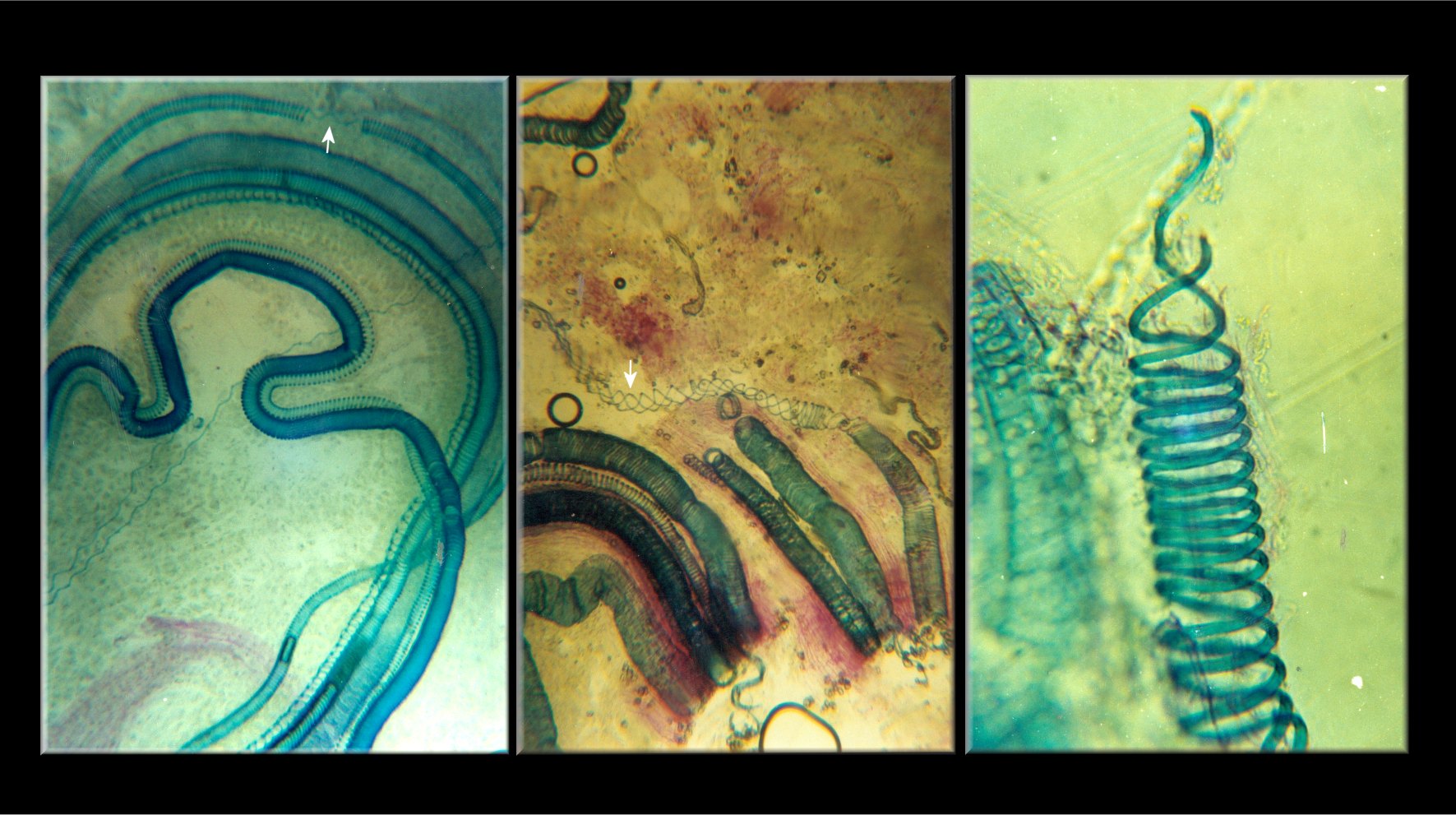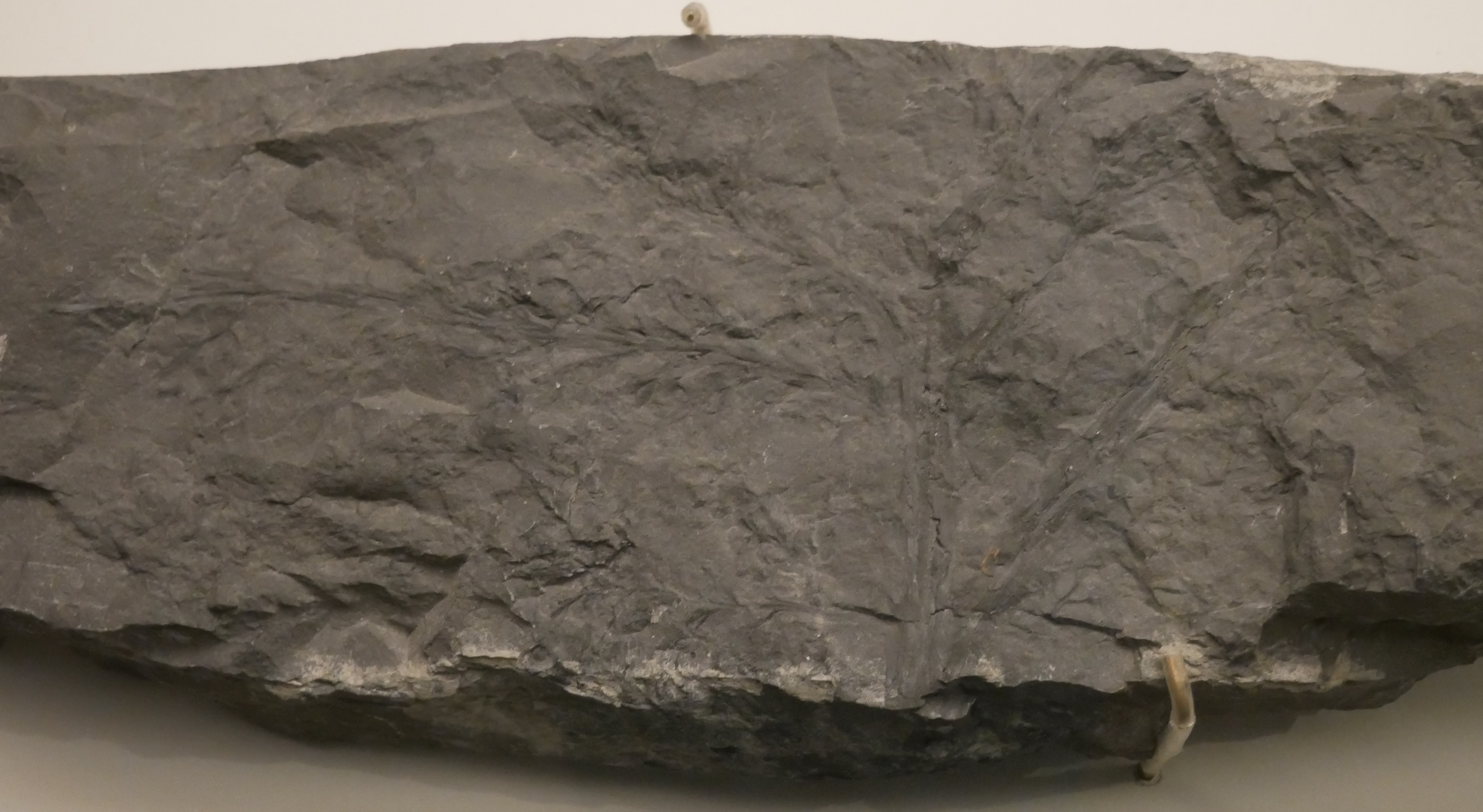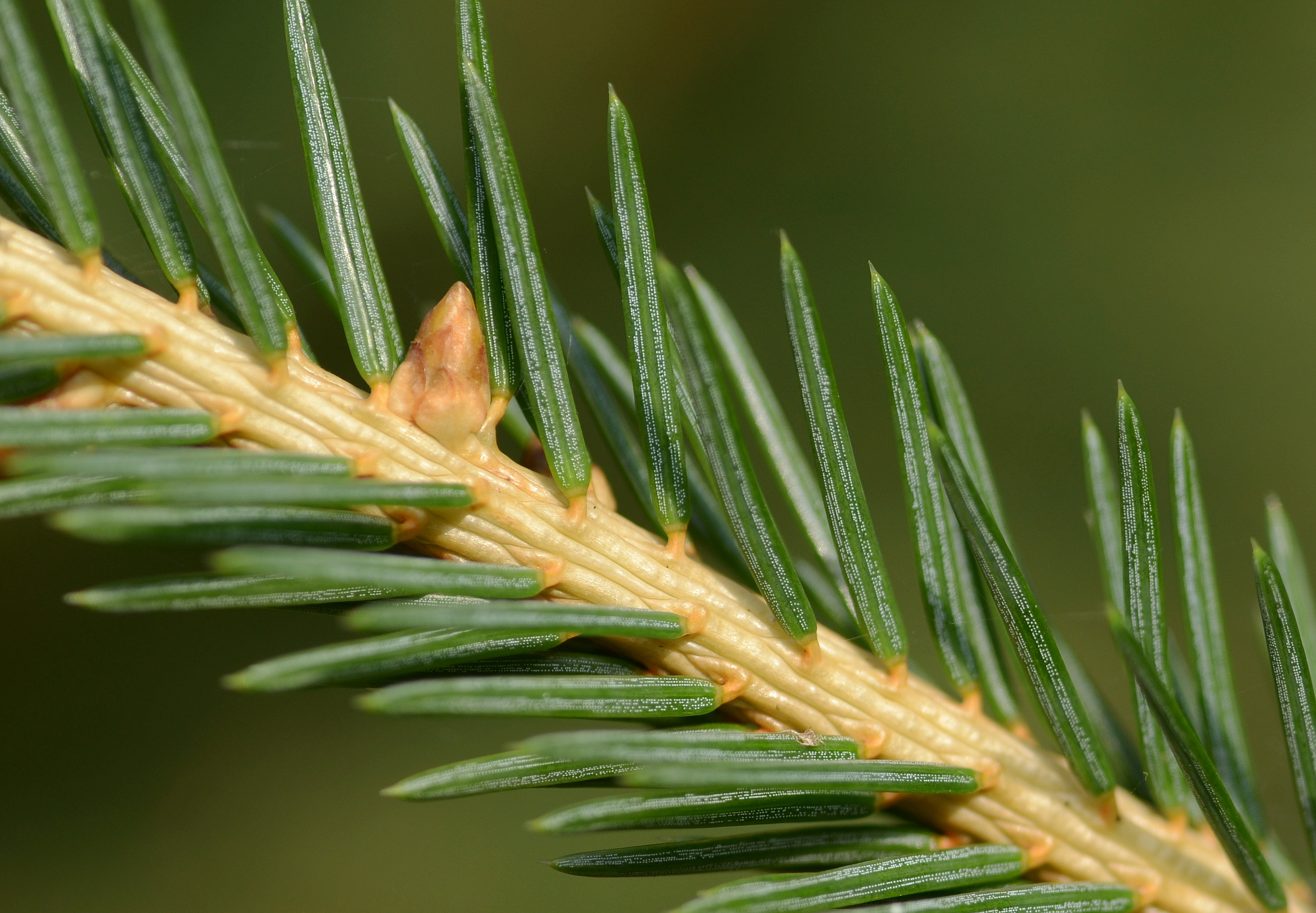|
Progymnosperm
The progymnosperms are an extinct group of woody, spore-bearing plants that is presumed to have evolved from the trimerophytes, and eventually gave rise to the gymnosperms, ancestral to acrogymnosperms and angiosperms (flowering plants). They have been treated formally at the rank of division Progymnospermophyta or class Progymnospermopsida (as opposite). The stratigraphically oldest known examples belong to the Middle Devonian order the Aneurophytales, with forms such as '' Protopteridium'', in which the vegetative organs consisted of relatively loose clusters of axes. '' Tetraxylopteris'' is another example of a genus lacking leaves. In more advanced aneurophytaleans such as '' Aneurophyton'' these vegetative organs started to look rather more like fronds, and eventually during Late Devonian times the aneurophytaleans are presumed to have given rise to the pteridosperm order, the Lyginopteridales. In Late Devonian times, another group of progymnosperms gave rise to the fir ... [...More Info...] [...Related Items...] OR: [Wikipedia] [Google] [Baidu] |
Archaeopteris
''Archaeopteris'' is an extinct genus of progymnosperm tree with fern-like leaves. A useful index fossil, this tree is found in strata dating from the Upper Devonian to Lower Carboniferous (), the oldest fossils being 385 million years old, and had global distribution. Until the 2007 discovery of '' Wattieza'', many scientists considered ''Archaeopteris'' to be the earliest known tree. Bearing buds, reinforced branch joints, and branched trunks similar to today's wood, it is more reminiscent of modern seed-bearing trees than other spore bearing taxa; It combines characteristics of woody trees and herbaceous ferns, and belongs to the progymnosperms, a group of extinct plants with gymnosperm-like wood but that produce spores rather than seeds. Taxonomy John William Dawson described the genus in 1871. The name derives from the ancient Greek (''archaīos'', "ancient"), and (''ptéris'', "fern"). ''Archaeopteris'' was originally classified as a fern, and it remained classifi ... [...More Info...] [...Related Items...] OR: [Wikipedia] [Google] [Baidu] |
Tracheophyta
Vascular plants (), also called tracheophytes () or collectively Tracheophyta (), form a large group of land plants ( accepted known species) that have lignified tissues (the xylem) for conducting water and minerals throughout the plant. They also have a specialized non-lignified tissue (the phloem) to conduct products of photosynthesis. Vascular plants include the clubmosses, horsetails, ferns, gymnosperms (including conifers), and angiosperms (flowering plants). Scientific names for the group include Tracheophyta, Tracheobionta and Equisetopsida ''sensu lato''. Some early land plants (the rhyniophytes) had less developed vascular tissue; the term eutracheophyte has been used for all other vascular plants, including all living ones. Historically, vascular plants were known as "higher plants", as it was believed that they were further evolved than other plants due to being more complex organisms. However, this is an antiquated remnant of the obsolete scala naturae, and the ... [...More Info...] [...Related Items...] OR: [Wikipedia] [Google] [Baidu] |
Tetraxylopteris
'' Tetraxylopteris'' is a genus of extinct vascular plants of the Middle to Upper Devonian (around ). Fossils were first found in New York State, USA. A second species was later found in Venezuela. Description Fossils of ''Tetraxylopteris'' have so far been discovered in two locations. ''T. schmidtii'' was named from the Catskill Clastic Wedge, New York State, United States of America, in rocks of Middle to Upper Devonian age (around ). ''T. reposana'' was found in the Campo Chico Formation, north-west Venezuela, in beds believed to be of Frasnian age (). The overall shape of ''Tetraxylopteris'' consisted of a complex system of branches. The main stem was 'pseudomonopodial', i.e. it divided dichotomously to produce side stems while the main stem maintained its identity. The main and side stems then bore three orders of branches (i.e. the first branches from the stems divided twice more). (There were possibly four orders in ''T. reposana''.) The branches were arranged in opposi ... [...More Info...] [...Related Items...] OR: [Wikipedia] [Google] [Baidu] |
Aneurophyton
''Aneurophyton'' is a genus of extinct vascular plants that belong to the Aneurophytales, a class of progymnosperms. The genus is primarily known from records of two well-known species found in mostly Middle Devonian and Upper Devonian (late Eifelian to Famennian) outcrops in Belgium, China (West Junggar), Germany, and the United States (New York). Some uncertain species within the genus are also recorded from Middle Devonian outcrops in Kazakhstan, Russia (Timan and Siberia), and the Ukraine. While a number of species have been described in the paleobotanical literature, the genus likely only contains two well-circumscribed species, ''A. germanicum'' and ''A. doui'', and possibly a third species, ''A. olnense'', from Fammenian outcrops in Belgium. If the ages of the Early Devonian ( Emsian) records of ''A. germanicum'' reported from Siberia are confirmed, these would constitute the oldest records of this genus. See also *Progymnosperm The progymnosperms are an extinct g ... [...More Info...] [...Related Items...] OR: [Wikipedia] [Google] [Baidu] |
Archaeopteridales
The Archaeopteridales are an extinct order of plants belonging to Progymnospermae The progymnosperms are an extinct group of woody, spore-bearing plants that is presumed to have evolved from the trimerophytes, and eventually gave rise to the gymnosperms, ancestral to acrogymnosperms and angiosperms (flowering plants). They h ..., and dominant forest trees of the Late Devonian. They reproduced with spores rather than seeds. References Middle Devonian plants Prehistoric plant orders Late Devonian plants Middle Devonian first appearances Late Devonian extinctions {{devonian-plant-stub ... [...More Info...] [...Related Items...] OR: [Wikipedia] [Google] [Baidu] |
Noeggerathiales
Noeggerathiales is a now- extinct order of vascular plants. The fossil range of the order extends from the Upper Carboniferous to the upper Permian ( Lopingian). Due to gaps in the fossil record, the group is incompletely known and poorly defined, and their taxonomic status and position in the plant kingdom are uncertain. The Noeggerathiales have been proposed in the evolutionary scheme in two remotely related groups of vascular plants, the Pteropsida and the Sphenopsida. Noeggerathiales have been previously linked to horsetails and ferns, but are currently believed to be progymnosperm The progymnosperms are an extinct group of woody, spore-bearing plants that is presumed to have evolved from the trimerophytes, and eventually gave rise to the gymnosperms, ancestral to acrogymnosperms and angiosperms (flowering plants). They ...s. Noeggerathiales had a tree fern like appearance, with leaves sprouting from the top of an unbranched trunk. They were primarily confined to ... [...More Info...] [...Related Items...] OR: [Wikipedia] [Google] [Baidu] |
Conifer
Conifers are a group of cone-bearing seed plants, a subset of gymnosperms. Scientifically, they make up the division Pinophyta (), also known as Coniferophyta () or Coniferae. The division contains a single extant class, Pinopsida. All extant conifers are perennial woody plants with secondary growth. The great majority are trees, though a few are shrubs. Examples include cedars, Douglas-firs, cypresses, firs, junipers, kauri, larches, pines, hemlocks, redwoods, spruces, and yews.Campbell, Reece, "Phylum Coniferophyta". Biology. 7th. 2005. Print. P. 595 As of 1998, the division Pinophyta was estimated to contain eight families, 68 genera, and 629 living species. Although the total number of species is relatively small, conifers are ecologically important. They are the dominant plants over large areas of land, most notably the taiga of the Northern Hemisphere, but also in similar cool climates in mountains further south. Boreal conifers have many wintertime ada ... [...More Info...] [...Related Items...] OR: [Wikipedia] [Google] [Baidu] |
Spruce
A spruce is a tree of the genus ''Picea'' (), a genus of about 35 species of coniferous evergreen trees in the family Pinaceae, found in the northern temperate and boreal ( taiga) regions of the Earth. ''Picea'' is the sole genus in the subfamily Piceoideae. Spruces are large trees, from about 20 to 60 m (about 60–200 ft) tall when mature, and have whorled branches and conical form. They can be distinguished from other members of the pine family by their needles (leaves), which are four-sided and attached singly to small persistent peg-like structures ( pulvini or sterigmata) on the branches, and by their cones (without any protruding bracts), which hang downwards after they are pollinated. The needles are shed when 4–10 years old, leaving the branches rough with the retained pegs. In other similar genera, the branches are fairly smooth. Spruce are used as food plants by the larvae of some Lepidoptera (moth and butterfly) species, such as the eastern spru ... [...More Info...] [...Related Items...] OR: [Wikipedia] [Google] [Baidu] |
Monopodial
Vascular plants with monopodial growth habits grow upward from a single point. They add leaves to the apex each year and the stem grows longer accordingly. The word ''Monopodial'' is derived from Greek "mono-", ''one'' and "podial", "foot", in reference to the fact that monopodial plants have a single trunk or stem. Orchids with monopodial growth often produce copious aerial roots that often hang down in long drapes and have green chlorophyll underneath the grey root coverings, which are used as additional photosynthetic organs. They do not have a rhizome or pseudobulbs so species adapted to dry periods have fleshy succulent leaves instead. Flowers generally come from the stem between the leaves. With some monopodial species, the stem (the rhizome) might fork into two, but for all monopodial orchids this is not necessary for continued growth, as opposed to orchids with sympodial growth.''The Orchid Expert'', Dr. D. G. Hessayon David Gerald Hessayon OBE (born 1928) is a Bri ... [...More Info...] [...Related Items...] OR: [Wikipedia] [Google] [Baidu] |
Heterosporous
Heterospory is the production of spores of two different sizes and sexes by the sporophytes of land plants. The smaller of these, the microspore, is male and the larger megaspore is female. Heterospory evolved during the Devonian period from isospory independently in several plant groups: the clubmosses, the ferns including the arborescent horsetails, and progymnosperms. This occurred as part of the process of evolution of the timing of sex differentiation.Sussex, I.M. (1966) The origin and development of heterospory in vascular plants. Chapter 9 in ''Trends in Plant morphogenesis'', ed. by E.G. Cutter, Longmans. Origin of heterospory Heterospory evolved due to natural selection that favoured an increase in propagule size compared with the smaller spores of homosporous plants. Heterosporous plants, similar to anisosporic plants, produce two different sized spores in separate sporangia that develop into separate male and female gametophytes. It is proposed that the em ... [...More Info...] [...Related Items...] OR: [Wikipedia] [Google] [Baidu] |
Macrophyll
Leaf size of plants can be described using the terms ''megaphyll'', ''macrophyll'', ''mesophyll'', ''microphyll'', ''nanophyll'' and ''leptophyll'' (in descending order) in a classification devised in 1934 by Christen C. Raunkiær and since modified by others. Definitions vary, some referring to length and others to area. Raunkiaer's original definitions were by leaf area, and differed by a factor of nine at each stage. Some authors simplified the system to make it specific to particular climates, and have introduced extra terms including notophyll, ''picophyll'', ''platyphyll'' and ''subleptophyll''. In ecology, microphyll and similar terms based on blade size of the leaf are used to describe a flora, for example, a "microphyll rainforest" is often defined as a forest where the dominant trees have leaves less than 7.5 cm in length. Raunkiaer's work Christen C. Raunkiaer proposed using leaf size as a relatively easy measurement that could be used to compare the adaptation of ... [...More Info...] [...Related Items...] OR: [Wikipedia] [Google] [Baidu] |




